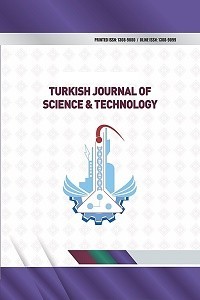Fractal Analysis of Shear-thinning Fluid Flow through Porous Media
Fractal Analysis of Shear-thinning Fluid Flow through Porous Media
Shear-thinning fluid, Porous media, Packed bed, Permeability Fractal modeling,
___
- 1. Bird, R.B., Stewart, W.E. and Lightfoot, E.N. (2008). Transport phenomena, Revised 2nd Edition, Wiley, New York.
- 2. Sabiri, N. and Comiti, J. (1995). Pressure drop in non-Newtonian purely viscous fluid flow through porous media. Chem. Eng. Sci., 50: 1193-1201.
- 3. Eslami, A. and Taghavi, S.M. (2017). Viscous fingering regimes in elasto-visco-plastic fluids. J. Non-Newt. Fluid Mech., 243: 79–94.
- 4. Tijani, H.I., Abdullah, N., Yuzir, A. and Ujang, Z. (2015). Rheological and fractal hydrodynamics of aerobic granules. Bioresource Techn., 186: 276–285.
- 5. Shokri, H., Kayhani, M. H. and Norouzi, M. (2017). Nonlinear simulation and linear stability analysis of viscous fingering instability of viscoelastic liquids. Physics of Fluids, 29: 033101 http://dx.doi.org/10.1063/ 1.4977443
- 6. Balhoff, M.T. and Thompson, K.E. (2006). A macroscopic model for shear-thinning flow in packed beds based on netweork modeling. Chem. Eng. Sci., 61: 698-719.
- 7. Chhabra, R.P., Comiti, J. and Machac, I. (2001). Flow of non-Newtonian fluids in fixed and fluidized beds. Chem. Eng. Sci., 56: 1-27.
- 8. Yu, B. and Liu, W. (2004). Fractal analysis of permeability for porous media. AIChE J., 50: 46-57.
- 9. Yu, B. and Cheng, P. (2002). A fractal permeability model for bi-dispersed porous media. Int. J. Heat Mass Transfer, 45: 2983-2993.
- 10. Pearson, J.R.A. and Tardy, P.M.J. (2002). Models for flow of non-Newtonian and complex fluids through porous media. J. Non-Newt. Fluid Mech., 102: 447-473.
- 11. Bird, R.B., Armstrong, R.C. and Hassager, O. (1987). Dynamics of polymeric liquids, Wiley, New York.
- 12. Comiti, J. and Renaud, M. (1989). A new model for determining mean structure parameters of fixed beds from pressure drop measurements: Application to beds packed with parallel pipedal particles. Chem. Eng. Sci., 44: 1539-1545.
- 13. Dharamadhikari, R.V. and Kale, D.D. (1985). Flows of non-Newtonian fluids through porous media, Chem. Eng. Sci., 40: 527-529.
- 14. Yu, B.M. (2005). Fractal character for tortuous stream tubes in porous media. Chinese Physics Letters, 22:158-160.
- ISSN: 1308-9080
- Başlangıç: 2009
- Yayıncı: Fırat Üniversitesi
Optimization for Next Generation Wireless System Using Radio Over Fiber in Terms of Topology
Shwan Asaad Othman OTHMAN, İbrahim TÜRKOĞLU
TiO2 Memristor Modelling with LabVIEW
Muhammet Emin ŞAHİN, Hasan GÜLER
PI and Fuzzy Logic Control of Photovoltaic Panel Powered Synchronous Boost Converter
PWM Control of AC Chopper Fed by Unbalanced 3-Phase Voltage Source
Development of Smart Security System for Remote Control Using Small Computer
Huda AL-SAFFAR, Ergun ERÇELEBİ
Fractal Analysis of Shear-thinning Fluid Flow through Porous Media
Elliptic Filter Based Noninvasive Blood Pressure Analyze with LabVIEW
Duygu KAYA, Mustafa TÜRK, Turgay KAYA
FPGA Implementation of a Chaotic Quadratic Map for Cryptographic Applications
